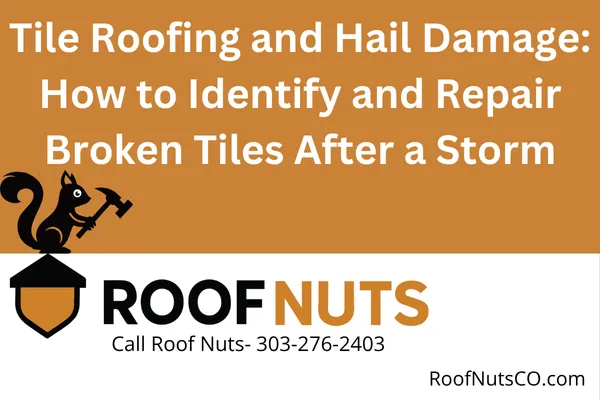
Tile Roofing and Hail Damage: How to Identify and Repair Broken Tiles After a Storm
How Hail Damages Tile Roofs — And What to Do About It
Hail is a major threat to roofing systems, especially in hail-prone states like Colorado and Georgia. If you have a tile roof, knowing what to look for after a storm can save you from more expensive repairs down the line.
Let’s break down what hail does to tile roofs and how to repair the damage the right way.
What Does Hail Damage Look Like on Tile Roofs?
Tile roofs — whether made of clay or concrete — are built for durability. But hailstones 1.5" or larger can still crack, chip, or shatter individual tiles.
Common signs of hail damage include:
Cracked or broken tiles (usually near the corners)
Spider web-like fractures on the tile surface
Dislodged tiles or visible gaps
Water stains on ceilings after storms (a sign of underlayment failure)
Damaged flashing or exposed underlayment
Note: Sometimes the damage is purely cosmetic, but other times it exposes the roof deck, which leads to water intrusion and accelerated aging of the roof system.
Should You Replace Just a Few Tiles?
Yes — and no.
If the damage is isolated to just a few tiles and the underlayment is intact, a tile roof repair is usually the right call. Skilled roofing contractors can remove the broken tile and replace it without disturbing the surrounding ones.
If hail damage is widespread, or if it’s compromised the waterproof underlayment, you may need a partial or full roof replacement.
The Tile Roofing Industry Alliance recommends professional inspections to assess both surface tile damage and hidden issues beneath.
How Are Hail-Damaged Tiles Repaired?
Here’s what a qualified tile roofing contractor will typically do:
Remove the broken tile without damaging the surrounding ones.
Check the underlayment and seal any punctures or wear.
Install a new tile using adhesive or mechanical fasteners (depending on slope and system).
Ensure the water channel is not obstructed during installation.
Repairs should always be done using materials compatible with your existing tile system. Many older tile profiles are now obsolete, so exact matches may not be available.
FAQs: Hail Damage and Tile Roofs
How do I know if my tile roof has hail damage?
Check for cracked, chipped, or missing tiles after a hailstorm. A professional inspection can confirm if underlayment or flashing has been compromised.
Can I walk on my tile roof to inspect it?
It’s not recommended. Improper foot traffic can cause more breakage. Use binoculars from the ground or call a roofing professional.
Is hail damage to a tile roof covered by insurance?
Most homeowners insurance policies cover storm damage, including hail, but it’s important to file a claim promptly and document everything with photos and an inspection report.
How long do tile roofs last after hail damage?
If left unrepaired, hail damage can reduce a tile roof’s lifespan by accelerating underlayment failure and water intrusion. Replacing broken tiles and sealing the system can help restore its full life expectancy.
Final Tip
Hail doesn’t always leave visible damage right away — but the risk of slow leaks increases if broken tiles are ignored. Regular inspections after every hailstorm can help prevent future headaches.
If you suspect hail damage to your tile roof in Colorado or Georgia, call Roof Nuts at 303-276-2403 (CO) or 404-476-6851 (GA) to schedule a storm damage inspection.
Visit our website to learn more
